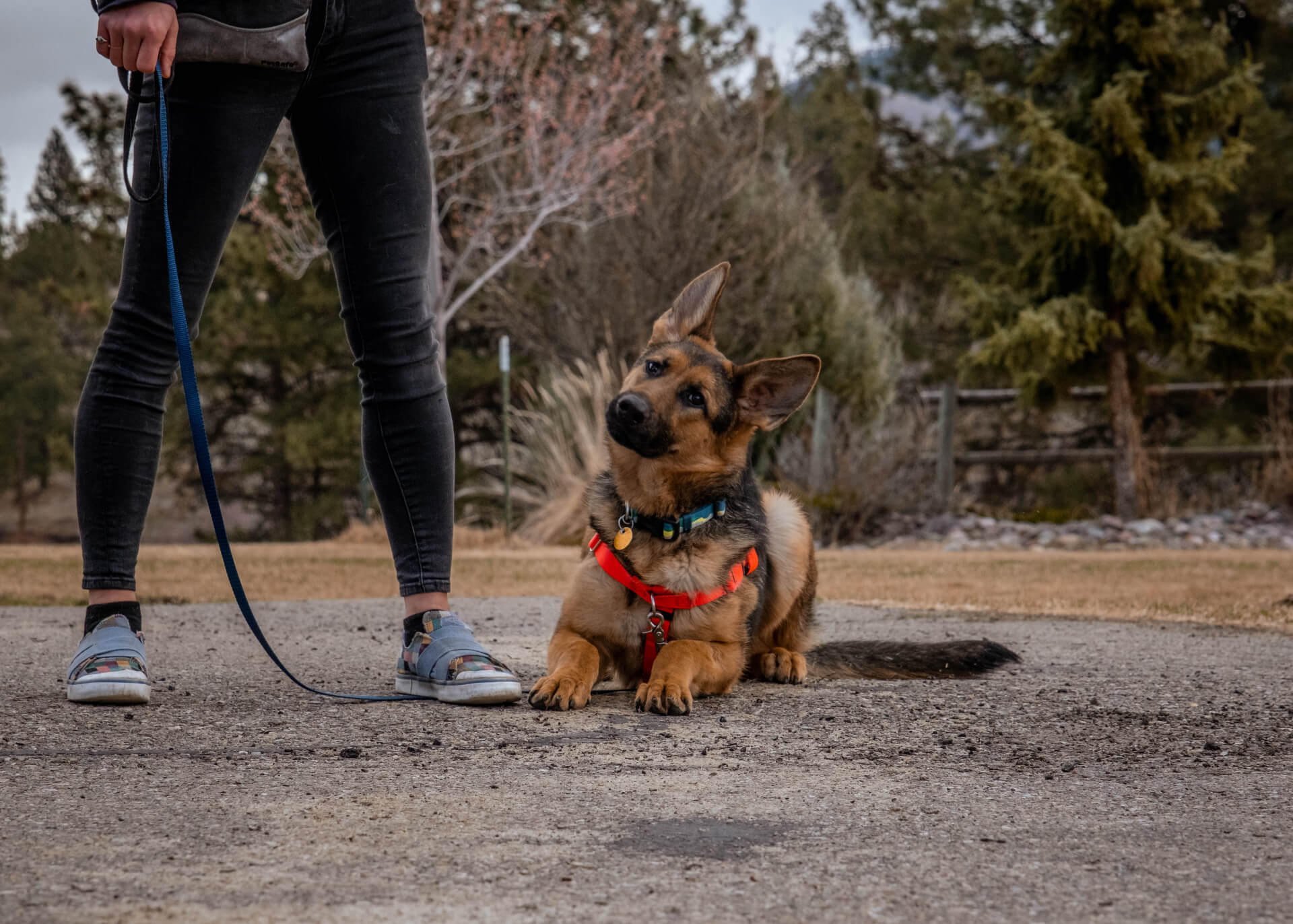
Dog Toys
Visit any pet store and you will find hundreds of dog toys of different sizes, shapes, and materials. It is important to pick age and size appropriate toys for your dog or puppy. There are four main categories of toys: food toys, interactive toys, chew toys, and comfort toys. We recommend having one or two of each category to fulfill your dog’s needs and provide outlets for unwanted behaviors like chewing and nipping or mouthing. Toys can also provide mental stimulation and help tire out your dog!
Food Toys
Dogs are natural foragers, so every meal from a bowl is a lost opportunity to tire out and mentally enrich your dog!
- Kongs – Every dog deserves a kong! These pyramid-shaped, rubber toys may look boring at first glance but the appeal of a kong is all in the stuffing! This hollow toy can be stuffed with your dog’s kibble, peanut butter, cheese whiz, cream cheese, canned food, etc. for a long-lasting and engaging treat. Freeze your stuffed kongs to increase the difficulty and extend the project. Kongs come in a variety of sizes and strengths so keep that in mind when choosing the perfect kong for your dog.
- Kibble/Puzzle toys – Dogs have an instinct to search for their food and many dogs enjoy working to get it. Feeding toys come in all shapes and sizes to allow for varying degrees of difficulty and meal sizes. Try the Kibble Nibble for dogs who eat up to two cups of food per meal, a Kong Wobbler for tougher chewers, or a Buster Cube for super-smart pups! When you first introduce your dog to a new food toy you may need to demonstrate how it works. You want to praise her for trying to get to the food and use higher value food items (treats vs. kibble) at first. As with any toy, supervise your dog to ensure she can’t chew the toy apart. Some affordable puzzle and kibble toys are available in our retail store at the shelter.
- Homemade food toys – Keep your dog guessing with a variety of homemade food toys, which are cost-effective but still enriching. Recycle old boxes, egg cartons, paper towel rolls, or takeout containers by putting your dog’s meal inside and letting them shred it to get the food out; you can even put a box of kibble inside another box inside of a bag! Even old muffin tins make great food toys when you smear a mixture of kibble and wet food inside. Be creative! Always supervise your dog with homemade food toys to prevent ingestion of foreign materials.
Toys for Chewing
Chewing is a natural and normal canine behavior. If we do not provide our dogs or puppies with appropriate outlets for chewing, they may find other items to fulfill that need, like shoes, furniture, or even us!
- Edible chews – There are so many different edible products that it can be hard to know which is right for your dog! There are a few general rules in selecting an edible chew: choose one that is bigger than you think necessary (to prevent swallowing), one that becomes supple when chewed as opposed to splintering, and one designed to match your dog’s jaw strength. We recommend edible chews like bully sticks, pigs ears, himalayan chews, or beef tracheas, for example. Always supervise your dog with an edible chew and speak with your veterinarian to determine what type is best for your dog.
- Rubber toys – Many companies make durable rubber rings, sticks, or orbs that are pleasurable for pups to chew on. Some brands, like Playology, even scent the rubber to make them more enticing! These kinds of toys are quite durable and can be a good option for longer-term use, though they may not be as exciting to your dog as a treat-filled Kong!
- Raw bones – Raw beef bones are great for longer sessions of chewing pleasure, and your dog will absolutely love it! Many dogs can chew up a bully stick in less than an hour, but bones are longer lasting and can even last multiple chewing sessions. Chewing on raw bones can also help to remove tartar from your dog’s teeth without having to wrestle your dog with a toothbrush! Be sure to select a bone that is raw — not cooked — as cooked bones can splinter, and experts recommend a bone at least half the size of your dog’s head or larger. Raw bones sometimes come with larger pieces of cartilage connecting other bone pieces and can also be worn down to small sizes, so always supervise your pup and remove promptly when necessary. As raw bones are of extremely high value to a dog, always separate multiple dogs into different rooms or their crate spaces so that conflict does not erupt.
- Nylabones/Benebones – These sturdy, hard, nylon chews can last for months! They have the added benefit of not giving off strange smells or turning into a soggy mess when chewed. Make sure to choose a Nylabone appropriate for your dog’s age and size.
Toys for Comfort
- Plush Toys – Some dogs like a security blanket in the form of a soft toy. Puppies in particular often appreciate a comfy plush toy to sleep with. Some adult dogs will groom a plush toy as if it were a living animal. Social interaction is a must for dogs of any age, but a plush companion can make bedtime or alone time a little easier. You can even try storing a soft toy in your laundry bin for a few days. This will increase its appeal because it will smell like you. Do not leave your adult dog or puppy with plush toys alone until you are sure how they will interact; some dogs enjoy shredding and ingesting the fabric and stuffing!
Final Tips
- Dogs sometimes get bored of toys quickly. One day they love chewing on their new Benebone, the next it sits dusty in the corner. Only leave out 3-4 chew or comfort toys and keep the rest of the toys away. Then, every week or so, trade out the toys for “new” ones from your stash! Your dog will be more likely to chew on that nylabone they abandoned when you reintroduce it a week or two later because of novelty.
- Put interactive toys like tug toys or fetch toys away and bring them out when you’re ready to play with your pup. A dog will be far less excited to tug on or chase a toy that has been laying on the ground for a few days.
